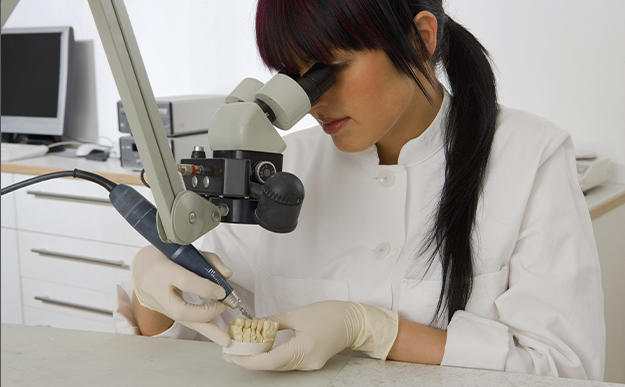17th Annual Research Day encourages 'outside the box' investigation

The School of Dentistry’s 17th Research Day required innovation, creative thinking, and adaptability to pull off—and those same traits quickly became themes of the day’s presentations.
The 17th annual day dedicated to showcasing cutting-edge research and scientific discovery in the field of dentistry and beyond was also the first to happen virtually. Speakers and attendees joined in from their homes and offices throughout the US and even the world to celebrate accomplishments in scholarship. Though it couldn’t occur in person, Research Day still brought together students, faculty, staff, and others who connected and learned from one another.
“Research is one of the three legs of our school’s mission statement,” shared David Bereiter, PhD, interim associate dean for research, explaining the importance of holding the event this year.
“This is the part where art meets science,” - Darnell Kaigler, Jr., DDS, MS
The day began with a keynote from Darnell Kaigler, Jr., DDS, MS, associate professor of dentistry at the University of Michigan. Kaigler laid the landscape for the past 20 years of dental advancements through the lens of creativity.
“Einstein said the greatest scientists are always artists,” Kaigler explained. “I believe that includes dentists as well.”
Kaigler encouraged practitioners to “learn how to learn,” exploring self-criticism and a patient-centered, personalized approach to care as he reviewed what patients expect and need from a modern dentist.
Reflecting on advancements like ultrasonic toothbrushes, invisible braces, and updated dental implant therapy protocols, Kaigler encouraged dentists and researchers to remember how far they’ve come before hinting at what he believes the most impactful advances on the horizon might be.
“The next advancements aren’t things that came out of dentistry, but they have novel and innovative applications in dentistry,” he explained. Those innovations include the use of robotics for minimally invasive procedures, virtual and augmented reality for training purposes, and regenerative sciences.
“This is the part where art meets science,” he explained. New technologies allow for innovative and creative solutions, as Kaigler explored through recent clinical trials and case studies.
Throughout his keynote, Kaigler encouraged researchers and practitioners to move forward with confidence and dare to think differently. “You have to be a little bit crazy, think outside the box, to really advance,” he said.
That desire to think differently was echoed in talks throughout the day, as researchers shared how their innovative efforts led to breakthroughs. Peter Bittner-Eddy, PhD, a periodontology researcher at the University of Minnesota, echoed Kaigler’s challenge, saying, “thinking outside the box is exactly what we did” when he and fellow researcher Lori Fischer, PhD, studied neutrophils and periodontal disease.
Alvin Wee, DDS, Phd, MPH, thought outside the box when he strove to understand the full color space and properly replicate vinyl transparency in teeth. Isha Mutreja, PhD, thought outside the box—and outside the tooth—in her research on a therapeutic stem cell approach to improving the success rate of prosthetic limbs by decreasing infection rates. And Boyen Huang, PhD, MHA, DDS looked beyond medical factors to explore the role of family history, social determinants, and geography in oral health.
In addition to changemaking published research, five students presented poster sessions on their research in oral biology. “The presenters did a wonderful job on their talks,” Bereiter reflected as he closed the day with gratitude for the school’s Continuing Dental Education for making Research Day possible. “I’m really very impressed.”
The day’s presentations will be made available on CDE Anytime at a later date.
Learn more about research at the School of Dentistry.